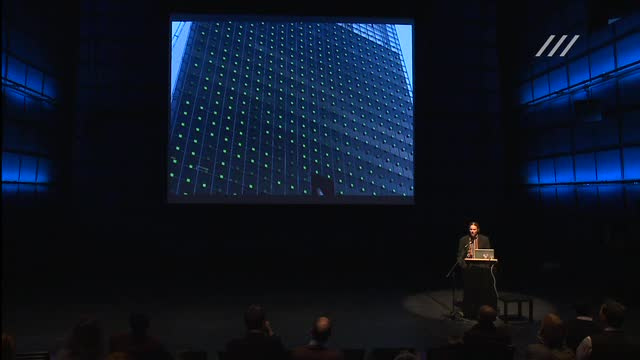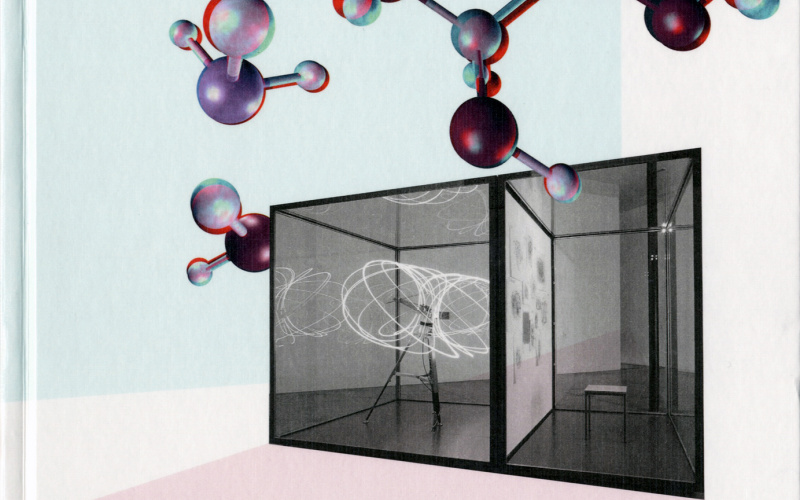Benjamin Staude, Tim Otto Roth: The Sonapticon

- Date
- Duration
- 32:23
Description
For two years now, artist Tim Otto Roth and mathematical neuroscientist Benjamin Staude have been working in the Sound Dome of the ZKM, where they make the fascinating world of neuronal interactivity come alive using synthetic audio neurons. In the Sonapticon Roth and Staude combine a unique translation of neuronal systems’ electrical communication into acoustic communication via the forty-three loudspeakers of the Sound Dome with the deceleration of biological neuronal processes that take place on the timescale of milliseconds.
In this way, in the Sonapticon neuronal communication mechanisms become both a sensual and a comprehensible experience.
Intuitive understanding of the acoustic feedback through sine tones in the Sound Dome space is complemented visually through lights mounted on the speakers indicating firing activity and a visualization of the changing membrane potentials projected onto the floor. Thus, with their Sonapticon, Roth and Staude transform the Sound Dome into a new instrument for which they have developed a special method of composing in and with the Sound Dome space: setting the connections, choice and location of scales up to the 1/8 tone range, and tempo variation. At the concert premiere three solo Piccolo flute players demonstrate different facets of the Sonapticon through their precise interventions, which ranged from a microtonal soundscape to a pseudo-repetitive pattern in the inaudible sound spectrum of ultra sound – a musical brainstorm.
Tim Otto Roth studied politics and philosophy in Tübingen before he changed
to studying liberal arts at the Kunsthochschule Kassel.
Since 2008, he is a doctoral candidate at the Academy of Media Arts Cologne.
In 1997, Roth gave his first major audiovisual performance with Rudi Meier (composition) and Christoph Böhme (electronics)
at various venues including the Donaueschingen Society of the Friends of Music.
Since 2002, Roth has aroused attention with his large-scale projects in public spaces.
In many of his projects he works closely together with scientists
(from KIT Karlsruhe, the European Space Agency, and NASA, amongst others).
He has received numerous awards, including the 2004 German Light Art Award LUX.US,
Lüdenscheid, and the International Media Art Award of the SWR and ZKM | Karlsruhe in 2004;
he received an Honorary Mention at Ars Electronica, Linz, in 2009.
After his studies of mathematics and philosophy at the Technische Universität
Berlin with a focus on differential geometry and philosophy of science,
Dr. Benjamin Staude turned his interest to Computational Neuroscience.
With a NaFöG scholarship at the Freie Universität Berlin and two years as a research
assistant at the RIKEN Brain Science Institute in Wako-Shi, Japan, he received
his doctorate in biology in 2008 from the Albert-Ludwigs-University of Freiburg.
After two more years as a research associate at the Bernstein Center of Computational Neuroscience Freiburg,
Staude moved back to Berlin where he works as a scientific consultant and programmer
for arts and science projects (for example, with Tim Otto Roth, Rainer Dunkel, and Archimedes GmbH), and as a
musician in various bands and projects (Mariahilff, Kapaikos).
